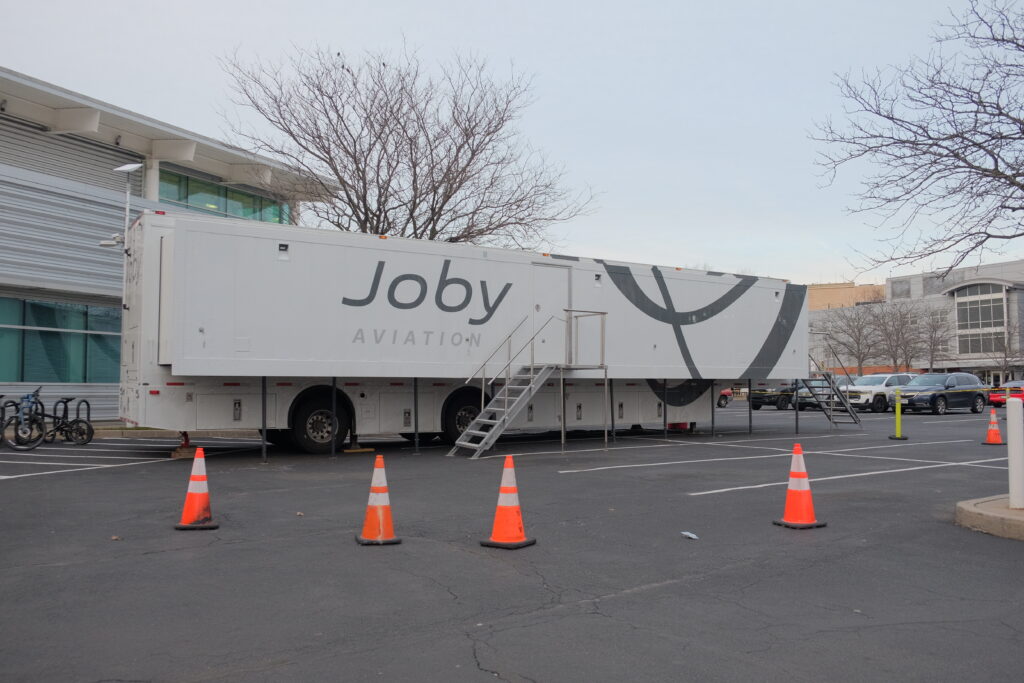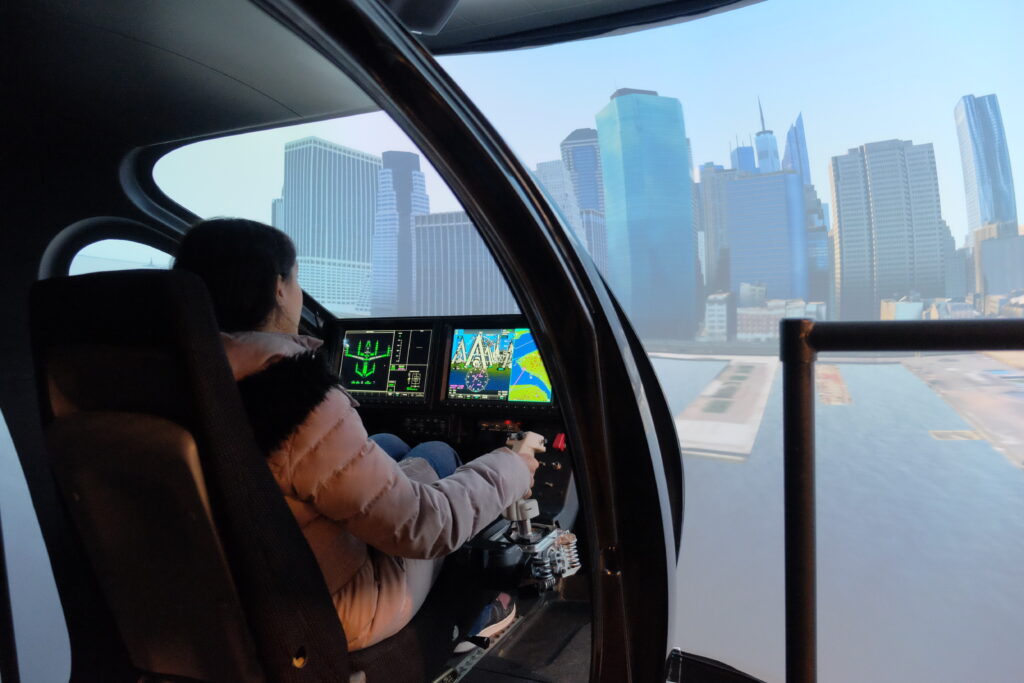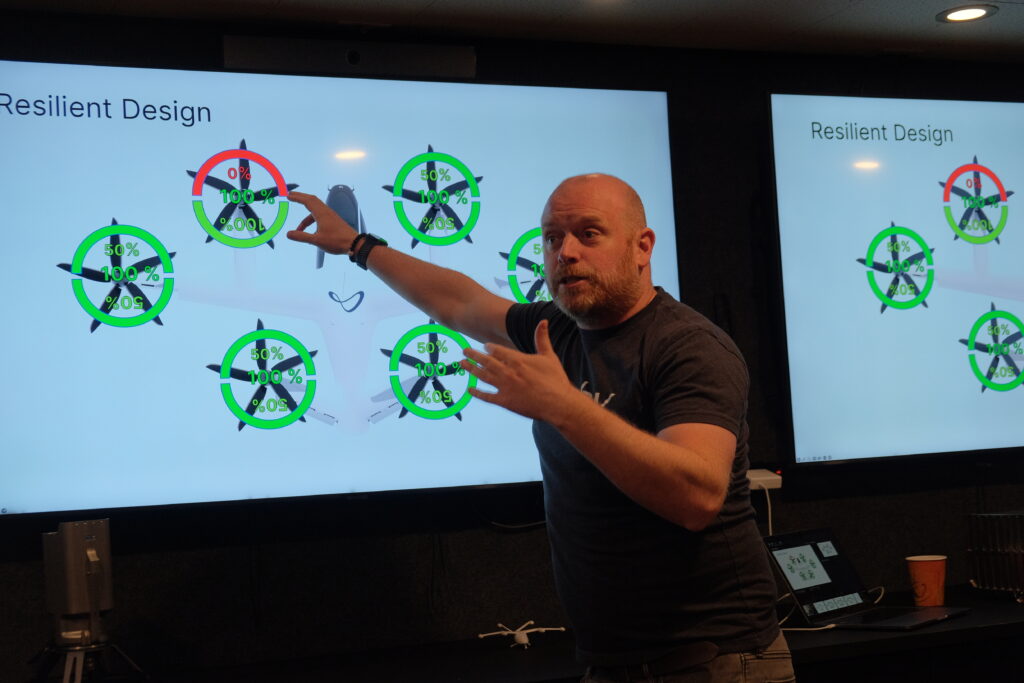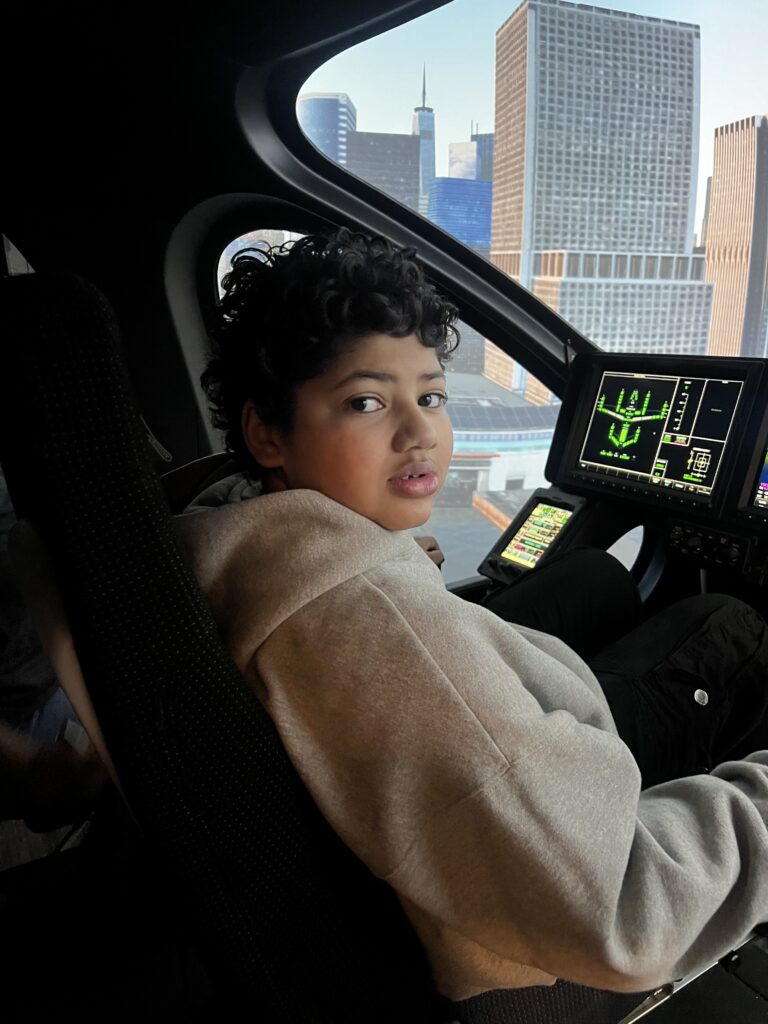
All photos credit: Charlie Finnerty
Joby Aviation, a tech startup that plans to bring electric short-distance air travel to New York City, welcomed visitors to take a ride in their flight simulator and learn about their ambitious reimagining of commuting at Vaughn College last week. Among those who visited throughout the week were high school faculty, transportation and environmental advocates, Vaugh college faculty and children from the Variety Boys & Girls Club of Queens.
The venture-backed aviation company plans to use electric vertical takeoff aircraft to create a service similar to Uber for short-haul flights, beginning with a direct route between the Downtown Manhattan/Wall St. Heliport and JFK International Airport. According to Joby’s East Policy Lead Lydon Sleeper, the flight will cut the commute — which can often take over an hour by car with traffic — down to seven minutes at a price point for customers that will be “competitive with Uber Black,” the luxury level Uber option. Sleeper puts that number around $140.
Joby started as a team of engineers based in Santa Cruz, California born out of the longtime dream of founder and CEO JoeBen Bevirt who had been fascinated by engineering and electric air travel since his childhood.
“[Bevirt] doesn’t want it to be a service for rich people,” Sleeper said. “‘Save a billion people an hour a day’ is what he wants to do. You can’t do that charging $250.”
 The aircraft borrows inspiration from several forms of air travel, using vertical takeoff that resembles that of a helicopter, forward-thrust gliding travel at speeds around 200 mph similar to a conventional airplane and a visual form factor that may remind many viewers of commercially available drones. The largest influence though, according to Sleeper, is the Bell Boeing V-22 Osprey, an aircraft first used by the American military in 2007 that combines the vertical takeoff and landing functionality of a helicopter with the long-range, high-speed cruise performance of a turboprop aircraft. Both Joby and the Osprey accomplish this with articulating rotors that shift from vertically positioned for lift during takeoff to a frontwards-facing position during flight to achieve smoother and faster flight than a helicopter could ever achieve.
The aircraft borrows inspiration from several forms of air travel, using vertical takeoff that resembles that of a helicopter, forward-thrust gliding travel at speeds around 200 mph similar to a conventional airplane and a visual form factor that may remind many viewers of commercially available drones. The largest influence though, according to Sleeper, is the Bell Boeing V-22 Osprey, an aircraft first used by the American military in 2007 that combines the vertical takeoff and landing functionality of a helicopter with the long-range, high-speed cruise performance of a turboprop aircraft. Both Joby and the Osprey accomplish this with articulating rotors that shift from vertically positioned for lift during takeoff to a frontwards-facing position during flight to achieve smoother and faster flight than a helicopter could ever achieve.
These flight mechanics, along with the use of electrical power, make the Joby both easy to pilot and quiet during flight. As part of the presentation, audio recordings of the Joby alongside other common aircraft that often populate New York City air traffic showed the dramatic reduction in noise pollution compared to conventional helicopters and planes.
According to Sleeper, Joby hopes to begin piloting its first commercial flights in New York City as early as next year.

All photos credit: Charlie Finnerty



